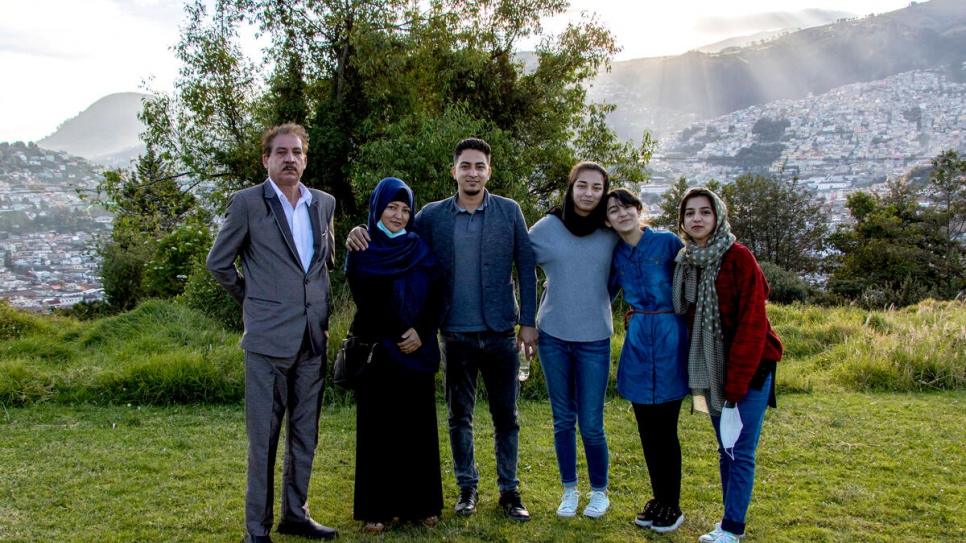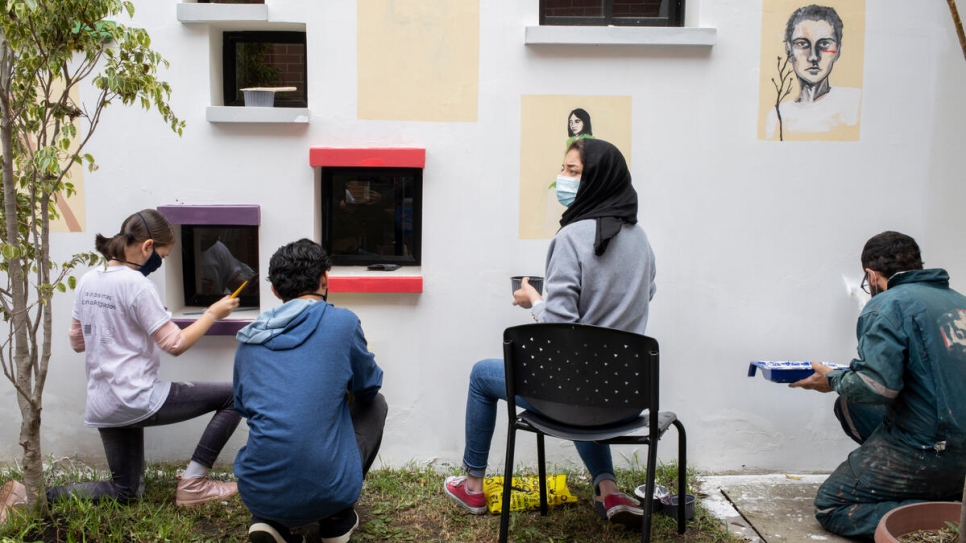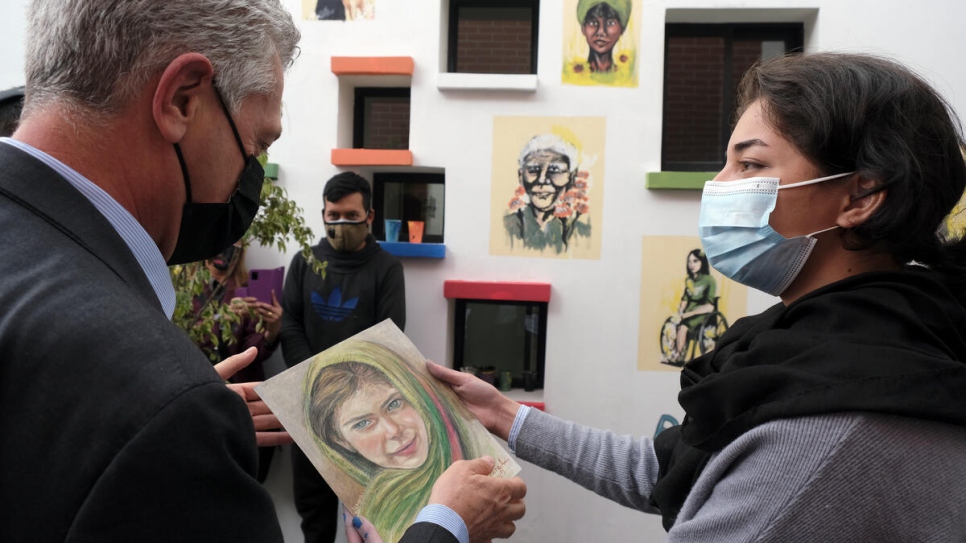Afghan teen makes her mark on Ecuadorian city that gave her refuge
Zohra was just 11 when she and her family fled to Ecuador. Now 16, she paints murals on buildings in her host city as a way of reconciling her two worlds.
Zohra, a 16-year-old Afghan artist, finds inspiration in the stories of her fellow refugees.
© UNHCR/Jaime Giménez
The two things about her native Afghanistan that Zohra remembers most vividly are the snow and the fear.
Zohra has not seen snow since 2016, when her family made the journey to the Ecuadorian capital of Quito, but she frequently dreams of the icy white landscapes of her hometown in northern Afghanistan. Those dreams are tinged with the overwhelming sense of dread that overshadowed her life back home.
Zohra’s father worked as a government official in Afghanistan, a position that made the entire family a target for Taliban fighters. One of Zohra’s brothers had to drop out of medical school because the commute to and from the university became too dangerous, while another, Hasibullah, fled to India.
“Whenever I think of my country, I feel fear.”
Little Zohra and her sisters saw their world shrink as they too were taken out of school and kept indoors.
“The only place we could go was the home of my late grandma,” said Zohra, seated in the living room of the small apartment in Quito she shares with her parents and four of her five siblings. “Whenever I think of my country, I feel fear…. I remember the fear.”
The family’s journey to safety was a long and harrowing one. While he was in India, Zohra’s brother Hasibullah found help securing the family visas to Ecuador. Their father sold all their belongings, including their house and car, to raise the money for airfares to the South American nation – some US$3,600 per ticket. The 44-hour-long journey involved changing planes nearly half a dozen times, and although their visas were in order, they were stopped and questioned by immigration authorities several times along the way.
Ecuador currently hosts over 70,000 refugees – the largest population of recognized refugees in Latin America – the vast majority of them from neighbouring Colombia. The country is also playing host to more than 450,000 Venezuelans who have fled insecurity and food and medicine shortages in recent years.
While recent events in Afghanistan have seen a surge in the number of Afghans fleeing their country, when they arrived in 2016, Zohra’s family were among just over two dozen Afghan refugees in the Andean nation.
“Through painting, I can create my own world.”
Adapting was difficult at first. None of the family spoke Spanish. That made keeping up with school a challenge and pushed Zohra to turn to art as a way of expressing herself. Back in Afghanistan, she had relied on art to imagine a life beyond the confines of her family home.
Art “is another world, a parallel universe. It’s hard to explain because it’s all about a different kind of feeling that you can’t express in words,” she said. “Through painting, I can create my own world.”
An after-school programme helped turn what had been a private way of dealing with all the changes of a young life marked by tumult into a very public way of bridging the divide between her native and adopted cultures. The programme, implemented by an NGO called Fudela, with the support of UNHCR, the UN Refugee Agency, provides young people like Zohra with art lessons, as well as a kit to allow participants to paint at home.
Thanks to the programme, Zohra ended up painting several murals on buildings in Quito, including one outside the Centre for Justice and Equality depicting the emotional rollercoaster that many who are forced to flee their homes go through.
“I feel their sadness, I feel their pain, I feel their joy,” Zohra said. “I want those who see it to say to themselves, ‘Someone is thinking about us, someone is worried about us, and someone wants better things for us.’”
While school continues to be an uphill battle for Zohra, she is determined to lay down strong foundations upon which to build her dreams.
“My teachers assign lots of homework, and I don’t see the usefulness of much of it,” she said. “That’s why I do my homework as quickly as possible, so that I can do the things that I enjoy, which is learning languages and painting.”
In addition to her native Farsi, Zohra is now fluent in Spanish and is teaching herself Japanese, English and French. She dreams of studying international relations at a university in Canada.
But in the meanwhile, Zohra intends to continue with her art.
“I want to paint and paint and paint and paint,” she said with a smile.




